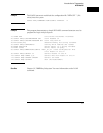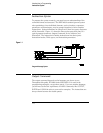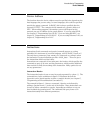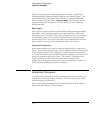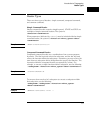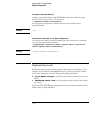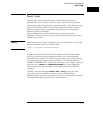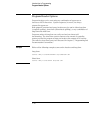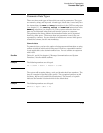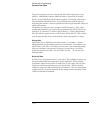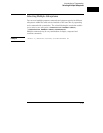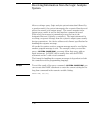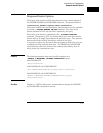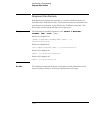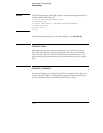
Parameter Data Types
There are three main types of data which are used in parameters. The types
are numeric, string, and keyword. A fourth type, block data, is used only for a
few instructions: the DATA and SETup instructions in the SYSTem subsystem
(see chapter 11); the CATalog, UPLoad, and DOWNload instructions in the
MMEMory subsystem (see chapter 12). These syntax rules also show how
data may be formatted when sent back from the system as a response.
The parameter list always follows the instruction header and is separated
from it by white space. When more than one parameter is used, they are
separated by commas. You are allowed to include one or more white spaces
around the commas, but it is not mandatory.
Numeric data
For numeric data, you have the option of using exponential notation or using
suffixes to indicate which unit is being used. However, exponential notation
is only applicable to the decimal number base. Do not combine an exponent
with a unit.
See Also Tables 6-1 and 6-2 in chapter 6, "Message Communications and System
Functions," list all available suffixes.
Example The following numbers are all equal:
28 = 0.28E2 = 280E-1 = 28000m = 0.028K.
The system will recognize binary, octal, and hexadecimal base numbers. The
base of a number is specified with a prefix. The recognized prefixes are #B
for binary, #Q for octal, and #H for hexadecimal. The absence of a prefix
indicates the number is decimal which is the default base.
Example The following numbers are all equal:
#B11100 = #Q34 = #H1C = 28
Introduction to Programming
Parameter Data Types
1–13



